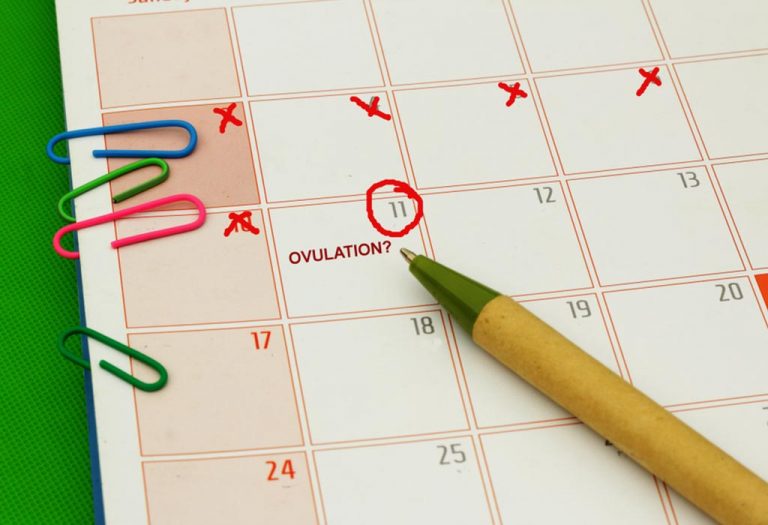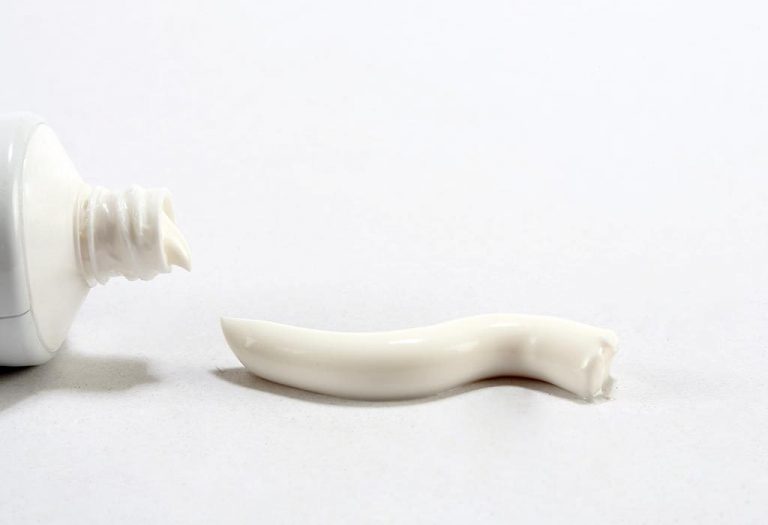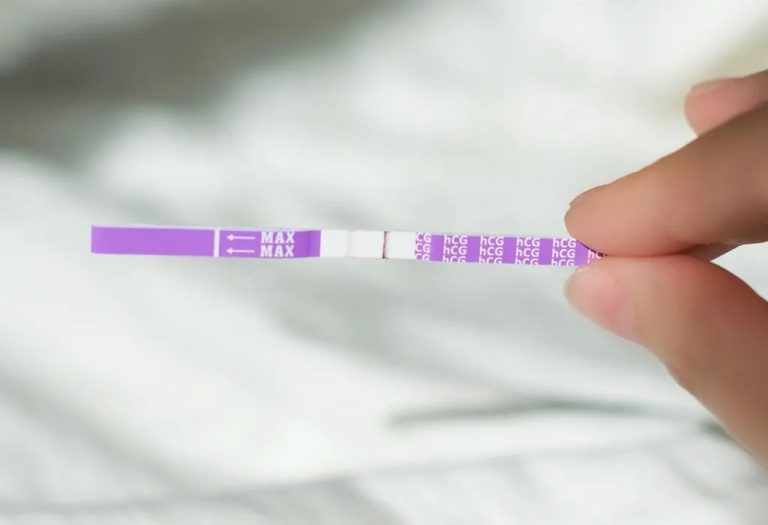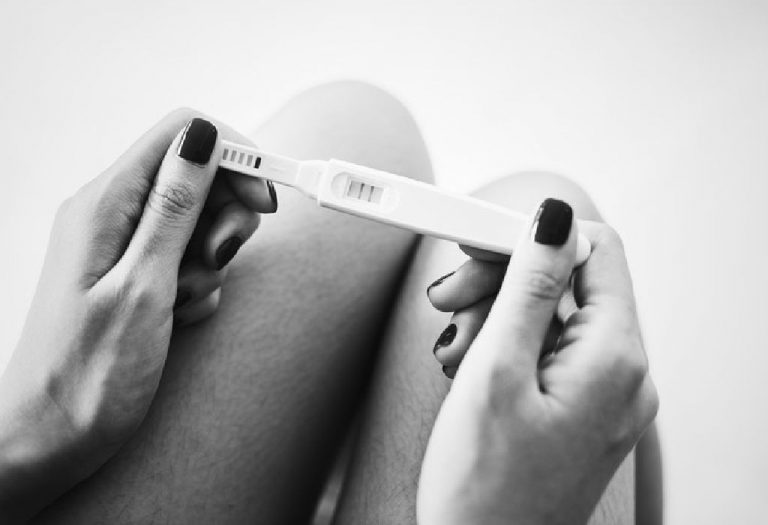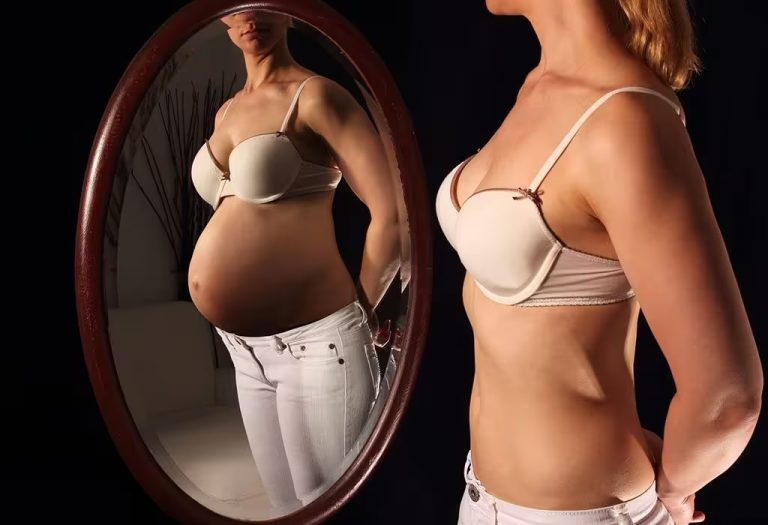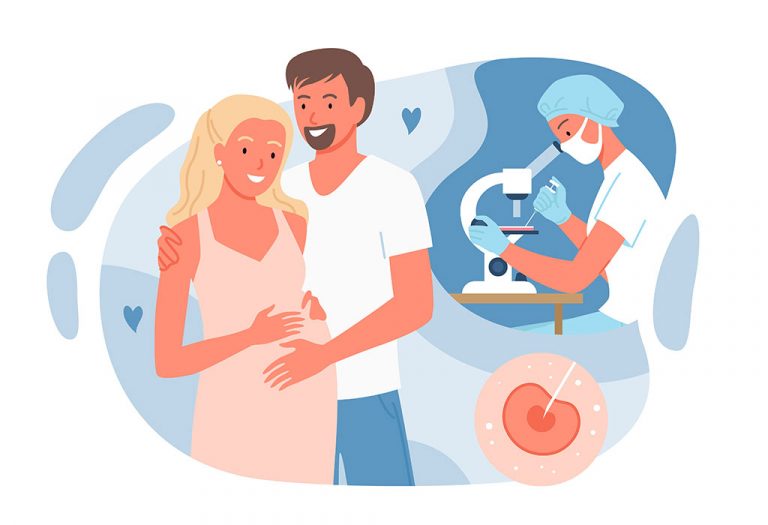Ovulation Symptoms: Key Signs, Timing, and Tracking Chart

Planning a pregnancy needs more than what most people think. If you are planning a pregnancy, the most important thing for you is your fertile window. Knowing your ovulation days lets you determine when you are the most fertile. Ovulation refers to the process of the release of a mature egg from the ovary, which is ready to be fertilised. Ovulation is part of the menstrual cycle and is significant in pregnancy. Tracking your ovulation days can help you stay on top of conceiving. Read this article to learn what ovulation is and how you can gauge your fertile window to increase your chances of getting pregnant.
What Is Ovulation?
Ovulation happens when one or more eggs get released from the ovaries between your monthly periods. Usually, 15-20 eggs mature inside the ovaries, and the ripest egg is discharged from the ovarian follicle. The egg gets released only when it is completely mature. It then travels down the fallopian tube, which connects the ovaries to the uterus. It is in the fallopian tube that the egg meets the sperm, if available, and is fertilised (1). Ovulation and hormonal release are controlled by the hypothalamus, which is a part of the brain (2). Put simply – ovulation is the period when a woman is most fertile.
When Does Ovulation Happen?
You can increase your chances of getting pregnant if you know when you are ovulating. Though it is difficult to predict the exact date of ovulation, it usually happens between 12 and 14 days before the next period starts. It is important to note that this is an average estimation, and the time of ovulation could be a few days before or after that (3).
If you have a regular period cycle, which is a 28-day menstrual cycle, consider the first day of your period as Day 1. You are likely to ovulate around the days 10 to 15.
If you have irregular period cycles, ovulation can be a week later or earlier, and it may differ from month to month. Please remember that a normal menstrual cycle can last as short as 21 days or as long as 35 days (4).
Once the egg is released, it has a lifespan of around 24 hours (5). If it does not get fertilised, it degenerates and triggers the next period. On the other hand, your partner’s sperm has a longer lifespan and can fertilise the egg for up to five days after intercourse.
How Long Does It Last?
According to the Cleveland Clinic, a mature egg released by the ovary only survives for about 12 to 24 hours after ovulation. If it is not fertilised by the sperm, it is absorbed by the body, unlike the sperm, which stays alive in the body for several days (6).
When Is My Fertile Window?
Fertile window refers to the days in a woman’s menstrual cycle when she is highly likely to get pregnant. The woman gets pregnant if she has intercourse from the five days before her ovulation to the day when she ovulates (7).
The ovulation chart below will help you understand the phenomenon much better.
These six days form the fertile window for her. As a result, any intercourse that happens within six days of ovulating results in a high chance of conception. If a woman has intercourse closer to the ovulation date, her chances of conceiving are higher.
Do You Ovulate Every Month?
Yes, ovulation happens every month. It can also be irregular due to health factors. Ovulation gets affected if you are stressed or ill. Sometimes, high levels of stress, extreme exercise or improper diet can trigger an anovulatory cycle, which means that ovulation does not occur in that cycle. During this cycle, the woman experiences some bleeding, which is not a period but is caused because of a build-up in the uterine lining that is not capable of sustaining itself.
What Causes Ovulation?
The pituitary gland in the brain produces the follicle-stimulating hormone at the beginning of the menstrual cycle. This hormone stimulates the ovaries to produce mature eggs. The follicles are cavities in the ovaries that are filled with fluids. Each of them contains an undeveloped egg. The hormone stimulates many follicles to develop and produce the estrogen hormone.
A number of follicles start to develop, but normally, only a single follicle becomes dominant. The egg in this follicle starts to mature. The estrogen level, which is lowest on the first day of the ovulation period, keeps increasing and plays an important part in thickening the lining of the womb with nutrients and blood. This helps prepare your body for a possible pregnancy. If the egg gets fertilised, this lining provides the required support and the nutrients that the egg needs to survive and grow. The high levels of estrogen are associated with sperm-friendly mucus, which is called the fertile cervical mucus. This is a thin and slippery discharge that is cloudy white. The mucus makes it possible for the sperm to swim easily and survive for several days.
The level of estrogen in the body continues to increase and causes a rise in the luteinizing hormone (LH) (8). The LH surge makes the dominant follicle rupture, and the follicle then releases the egg from the ovary to enter the fallopian tube. This is what causes ovulation.
How to Predict Ovulation
Though it is difficult to predict exact ovulation days, there are a few ways that help estimate the likely days of ovulation.
1. Calendar method
If your menstrual cycle is regular, you can use this method, which is also known as the Standard Days Method. In this method, you need to count back 14 days from the day when your next period is expected. The fertile window is calculated on the day of ovulation and the five days preceding it.
Though this method is very easy, it is not very accurate, even if you know exactly when your next period date is. This is because ovulation does not necessarily happen 14 days before menstruation.
The ovulation day may vary from seven to nineteen days before the day of menstruation. Thus, the likelihood of ovulation happening 14 days before the period is very low. This method may even make you miss out on your fertile window completely. The technique is, however, free, and one can calculate the ovulation day using the fertility ovulation calculator.
2. Ovulation Predictor Kit
The ovulation predictor kit lets you test your hormone levels. The test kits are of two kinds: one tests urine, and the other tests the saliva. The pee-on-a-stick test indicates when the LH level has gone up, which indicates that one of your ovaries will soon release an egg. The saliva test uses a microscope and spots a pattern in the dried saliva that tends to indicate the rise in the estrogen level that happens a few days before ovulation.
The ovulation kit is accurate 99% of the time to detect the surge in LH. However, the kit is unable to confirm that ovulation will occur a day or two later. Also, some women tend to have an LH surge without any egg release, or they may have false peaks, which could be misleading.
3. Charting the Basal Body Temperature
Using the charting method to track any change in your basal body temperature can also help determine the likely ovulation days. This, however, must be done for a few cycles before you can understand your body’s pattern. The pattern that develops over time lets you know when you may be ovulating next. This method is free but takes a lot of time, effort and patience.
The BBT changes 12 to 24 hours after ovulation, and the fertility of a woman is the highest two days before ovulation. Since the life span of the egg is only one day, when using the BBT method, there may be very little time left to conceive.
4. Cervical Mucus Method
Cervical mucus is the vaginal discharge that can sometimes be seen on the underwear. During most of the month, one can spot very little mucus, and it is also very sticky and thick. However, three to four days before, during and after ovulation, there is an increase in the discharge, and there is also a change in its texture. It is clear, slippery and very stretchy. This can be used as an indication to predict your ovulation days.
This method requires a woman to check her ovulating days by seeing the consistency of the cervical mucus. The method is solely dependent on the woman’s judgment, and since there is no instrument to measure it, it may sometimes go wrong. The method is also not useful for those who produce lots of mucus or have drastically varying cycles.
So, if you want to know when you ovulate, you can use one of the above methods.
Signs That You Are Ovulating
Am I ovulating? You can look for some signs that can help you know if you are ovulating. However, these symptoms vary from person to person, and it is also possible that you may not experience any symptoms at all.
The common signs that let you know that you are ovulating are (9):
1. Change in the Texture of the Cervical Fluid
The cervical fluid resembles egg whites and lets you know when you are close to your ovulation days. A few weeks after your periods, the body begins to prepare for ovulation, and this makes the mucus clear and slippery. The mucus stays in this form for around nine days. The look and feel of cervical fluids may vary from one person to another. However, you are likely to see some change in the texture of cervical fluid when you are ovulating. If you have a lot of fluid discharge on a day (much more than usual), and the mucus becomes stretchy when collected on your fingers, you can expect ovulation to occur within the next two days, or the chances are you are ovulating that day.
2. Change in the Basal Body Temperature
The basal body temperature tends to be consistent for most women before ovulation. It tends to decrease closer to ovulation and then sees a sharp increase after ovulation. When there is an increase in temperature, it is a sign that you have just ovulated. Tracking the basal body temperature for a few months gives a pattern which, when studied closely, lets you know when you are ovulating.
3. Cervical Position Change
The cervix, which is the lowermost part of the uterus, goes through a lot of changes during ovulation. When you ovulate, it becomes soft and high. It also becomes open and wet. It may take some time to know how your cervix feels and what changes it goes through at the time of ovulation. We recommend that you chart cervix changes for a period to see a pattern.
What Are the Symptoms of Ovulation?
The other signs of ovulation pregnancy indications are (6):
- Light spotting
- A slight cramp or pain on one side of the pelvis
- Tender breasts
- Bloating in the abdomen
- Ovulation pain, or pain in the lower abdomen
- Increase in sex drive
- Increase in the sense of taste, smell and vision
- Nausea and headache
It may be a little difficult to track these symptoms at first, but it gets easy to recognise them with time. Tracking these signs makes it easy to understand the ovulating days and, therefore, plan the pregnancy.
When Should I Go for Ovulation Testing?
Knowing when you are ovulating can help maximise your chances of getting pregnant. Taking an ovulation test lets you know the menstrual cycle and ovulation days in the cycle. Ovulation tests work by identifying the presence and concentration of the luteinizing hormone in your urine. This test is especially useful for people who do not have regular periods.
About 12-36 hours before ovulation, there tends to be a rise in the LH levels. This lets you know when it is time for your ovaries to release an egg. In other words, it lets you know when you are ovulating. If the ovulation test is positive, it means that you are likely to be ovulating.
You can do an ovulation test on the 17th day, minus your menstrual cycle. So, if you have a 28-day cycle, you can start checking whether you are ovulating from the 11th day and continue until the 17th day. If your cycle is irregular, you should start testing based on the shortest cycle that you had in the last 6 months. The more variation in your cycle, the more tests will be needed to determine your ovulation days. Most women ovulate 12-36 hours after their first positive ovulation test.
You can buy an over-the-counter ovulation test kit or consult a doctor. Most kits specify at what time of the day you need to do the ovulation test. Some kits require the test to be done in the morning when the LH levels are high, while others require the testing to be done in the afternoon when the hormone traces appear in the urine. Therefore, it’s best to follow the instructions on the package.
When to Consult the Doctor?
Understanding ovulation can sometimes be tricky if you are trying to conceive. If you are planning a pregnancy soon, consulting an expert to discuss any doubts or misconceptions you have about ovulation can help a great deal.
They can help find the root cause of irregular ovulation or any other unusual symptoms you may be experiencing. Doctors, in one-on-consultation, can also advise you on ovulation tracking and how to time your intercourse to increase the chances of conception. If you are not planning for a baby, they can recommend you a suitable form of contraception.
FAQs
1. How many days during the period of ovulation can you get pregnant?
A sperm can survive in the uterus longer than an egg, from three to five days. This means you have the chance to get pregnant by having sex from about five days before you start ovulation to one day after your ovulation. The best chances of pregnancy occur when you have intercourse one to two days before you ovulate and on your day of ovulation. The chances of conception can also increase when you have sperm present in your body during ovulation.
2. Is pain a normal occurrence during ovulation?
Not all, but several people feel pain during the ovulation phase. Ovulation pain is a type of cramping or pain in the pelvic area during ovulation when an egg bursts from a follicle. It is usually experienced in the lower abdomen or pelvis, either in the middle or on any one side. Some may even experience light bleeding. Ovulation pain is not always normal; it may also occur due to a medical condition. Thus, it is best to discuss it with your doctor to rule out any complications. Over 40% of women of reproductive age experience some discomfort around the midcycle of their menstrual cycle (10).
3. Can I still ovulate if I’m on birth control?
The hormonal birth control pills work by thickening cervical mucus, which makes it difficult for the sperm to transport and stop ovulation. So, if you are on birth control pills or any other hormonal contraception, strictly as prescribed, you will not ovulate.
4. Can you only get pregnant during ovulation week?
Since sperm can survive in the reproductive tract for about five days if the conditions there are favourable, having sex in the time frame leading up to ovulation or on the ovulation day itself can help you become pregnant.
5. What is the best time to get pregnant?
The best time to conceive is in the two days leading to ovulation or on the day of ovulation (11).
6. What health conditions affect ovulation?
Polycystic ovary syndrome (PCOS), premature ovarian failure, Hypothalamic dysfunction, and excess of prolactin in the system are some common causes of ovarian disorders, which may impact fertility and conception (12).
If you plan to get pregnant, it is important to know the days you are ovulating, as these are the days on which you are the most fertile. While it is true that no one can predict the exact date of ovulation, the methods and symptoms listed above can help you make an informed estimate and thus increase your chances of successful conception.
References/Resources:
1. Ovulation and fertility; BetterHealth Channel; https://www.betterhealth.vic.gov.au/health/conditionsandtreatments/ovulation
2. Holesh. J. E, et al.; Physiology, Ovulation; StatPearls Publishing; https://www.ncbi.nlm.nih.gov/books/NBK441996/
3. Normal Menstrual Cycle; UCSF; https://crh.ucsf.edu/about-fertility/normal-menstrual-cycle
4. About Menstruation; About Menstruation; NIH; https://www.nichd.nih.gov/health/topics/menstruation/conditioninfo
5. Fertility Awareness-Based Methods of Family Planning; ACOG; https://www.acog.org/womens-health/faqs/Fertility-Awareness-Based-Methods-of-Family-Planning?utm_source=redirect&utm_medium=web&utm_campaign=otn
6. Ovulation; Cleveland Clinic; https://my.clevelandclinic.org/health/articles/23439-ovulation
7. Optimizing Natural Fertility; American Society for Reproductive Medicine; https://www.reproductivefacts.org/news-and-publications/patient-fact-sheets-and-booklets/documents/fact-sheets-and-info-booklets/optimizing-natural-fertility/
8. Your menstrual cycle; OASH; https://www.womenshealth.gov/menstrual-cycle/your-menstrual-cycle
9. Ovulation signs – Getting pregnant; Mayo Clinic; https://www.mayoclinic.org/healthy-lifestyle/getting-pregnant/expert-answers/ovulation-signs/faq-20058000
10. Brott. N. R, Le, J. K; Mittelschmerz; StatPearls Publishing; https://pubmed.ncbi.nlm.nih.gov/31747229/
11. Women’s Health Infographic: Ovulation; NIH; https://www.nichd.nih.gov/newsroom/digital-media/infographics/ovulation
12. Ovulation Disorders; Temple Health; https://www.templehealth.org/services/conditions/ovulation-disorders
Clomid Citrate for Ovulation
Ovarian Follicle and Its Role in Fertility
Can You Get Pregnant After Ovulation
Was This Article Helpful?
Parenting is a huge responsibility, for you as a caregiver, but also for us as a parenting content platform. We understand that and take our responsibility of creating credible content seriously. FirstCry Parenting articles are written and published only after extensive research using factually sound references to deliver quality content that is accurate, validated by experts, and completely reliable. To understand how we go about creating content that is credible, read our editorial policy here.










